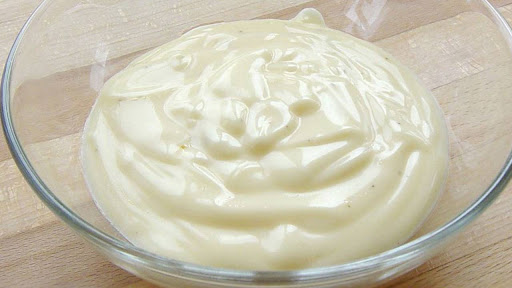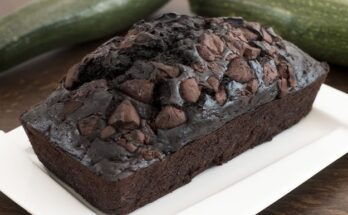Mayonnaise Recipe: Mayonnaise is one of the most versatile condiments in the culinary world. Whether you’re spreading it on a sandwich, whisking it into a salad dressing, or using it as a dip, its creamy texture and rich flavor enhance countless dishes. But have you ever wondered how to make mayonnaise at home?
Homemade mayonnaise isn’t just easy to whip up; it’s also healthier and more flavorful than store-bought versions. With just a handful of ingredients and a few minutes, you’ll have a fresh, preservative-free condiment tailored to your tastes.
Ingredients Required for Homemade Mayonnaise
To make perfect mayonnaise, you need only a few basic ingredients:
- 1 large egg yolk (preferably pasteurized).
- 1 teaspoon Dijon mustard (for flavor and emulsification).
- 1 cup of neutral oil (such as canola, grapeseed, or sunflower oil).
- 1 tablespoon vinegar or lemon juice (for acidity and preservation).
- Salt to taste.
For a personal touch, consider adding:
- Minced garlic for aioli.
- Chili or paprika for a spicy kick.
- Fresh herbs like parsley, dill, or tarragon.
Tools You’ll Need
Before starting, gather these tools:
- A mixing bowl or food processor.
- A whisk, hand blender, or stand mixer.
- A measuring spoon and cup for accuracy.
- A clean jar with a lid for storage.
Pro Tip: Use a narrow, tall container if you’re using a hand blender for easier emulsification.
How to Prepare a Perfect Mayonnaise
Step 1: Preparing Your Ingredients
Start by ensuring all your ingredients are at room temperature. This step is crucial because cold ingredients can prevent proper emulsification, leading to separation. Measure your oil and prepare the egg yolk in a clean bowl to avoid contamination.
Step 2: Starting the Emulsion
The heart of making mayonnaise is creating an emulsion. But what’s an emulsion? It’s when two liquids that don’t naturally mix—like oil and water—are combined with the help of an emulsifying agent, such as egg yolks and mustard.
- Combine Egg Yolks and Mustard: Start by placing the egg yolk and mustard in your mixing bowl. Whisk or blend them together until smooth. This forms the base of your emulsion.
- Gradual Mixing: Slowly introduce a small amount of oil—just a few drops at first—while continuously whisking or blending. The key here is patience. If you add too much oil at once, the emulsion can break.
- Check for Emulsion: When the mixture starts to thicken and look creamy, you’re on the right track.
Pro Tip: Whisk with consistent speed to ensure the oil is fully incorporated without breaking the emulsion.
Step 3: Adding Oil Gradually
Now comes the critical step: incorporating the rest of the oil. This is where many people struggle, but with a steady hand, you’ll master it in no time.
- Slow and Steady Wins the Race: Pour the oil in a slow, steady stream while whisking or blending continuously. If you’re using a hand blender, keep it moving in circular motions.
- Watch for Thickening: As the oil incorporates, you’ll notice the mixture thickening into a creamy consistency. This indicates the emulsion is forming correctly.
- Adjust as Needed: If the mixture gets too thick too quickly, you can add a small amount of water or vinegar to thin it slightly and keep the process smooth.
Oil Choice Tip: Neutral oils like grapeseed or canola are ideal for a classic mayo taste. Olive oil adds richness but can overpower the flavor if overused.
Step 4: Adjusting the Flavor
Here’s where you make your mayonnaise uniquely yours. Flavor adjustments ensure your mayonnaise matches your taste preferences or complements the dish you’re preparing.
- Balance the Acidity: Add lemon juice or vinegar to taste. This adds tanginess and stabilizes the emulsion.
- Season with Salt: A pinch of salt enhances all the flavors.
- Optional Additions:
- Crushed garlic for aioli.
- A dash of cayenne pepper for heat.
- Herbs like dill or parsley for a fresh twist.
Taste as you go to ensure the flavors are balanced. Remember, it’s easier to add more seasoning than to remove it, so go slow.
Step 5: Checking Consistency
Consistency is key to good mayonnaise. Whether you like it thick and rich or slightly thinner, achieving the perfect texture is easier than you think.
- Too Thick? Add a few drops of water, lemon juice, or vinegar and whisk to loosen the mayo.
- Too Thin? Slowly whisk in more oil to thicken the mixture.
- Ideal Texture: Your mayonnaise should hold its shape on a spoon but still be spreadable.
Troubleshooting Tip: If your mayo separates or doesn’t thicken, don’t panic! Start a new yolk in a clean bowl, and slowly whisk in the broken mixture to save it.
Step 6: Storing Your Mayonnaise
Once your mayonnaise is done, it’s important to store it properly to ensure freshness and safety.
- Use a Clean Jar: Transfer your mayonnaise into a sterilized jar or airtight container.
- Refrigerate Immediately: Homemade mayo should be kept cold at all times due to the raw egg content.
- Shelf Life: Use your mayonnaise within 5–7 days to avoid spoilage.
Safety Tip: Always handle raw eggs carefully to minimize the risk of foodborne illnesses. Pasteurized eggs can be used for added safety.
Common Mistakes and How to Fix Them
Making mayonnaise is a delicate process, and mistakes can happen. Here’s how to fix common issues:
Separation or Breaking:
- Cause: Adding oil too quickly or not whisking enough.
- Fix: Start fresh with a new yolk and slowly add the broken mixture.
Too Oily or Bland:
- Cause: Lack of acid or seasoning.
- Fix: Add more lemon juice, vinegar, or salt to balance the flavor.
Overly Strong Flavor:
- Cause: Using a strong-flavored oil like extra virgin olive oil.
- Fix: Mix in more neutral oil to tone it down.
Variations on Classic Mayonnaise
Homemade mayonnaise can be a blank canvas for creativity. Try these variations to elevate your meals:
- Aioli: Blend in crushed garlic for a Mediterranean-inspired sauce.
- Spicy Mayo: Add chili paste, Sriracha, or smoked paprika for heat.
- Herb-Infused Mayo: Stir in finely chopped herbs like parsley, cilantro, or chives for a fresh flavor.
Tips for Success
- Room Temperature Ingredients: Always ensure all ingredients are at room temperature to prevent separation.
- Go Slow: Add oil gradually and whisk or blend continuously.
- Experiment: Don’t be afraid to customize the recipe to suit your taste buds.
Pairing Ideas for Homemade Mayonnaise
Mayonnaise isn’t just a spread—it’s a multipurpose condiment. Here are some ideas for using it:
- Classic Uses: Sandwiches, wraps, and burgers.
- As a Dip: Pair with fries, chicken nuggets, or veggie sticks.
- In Dressings: Use as a base for coleslaw, potato salad, or ranch dressing.
Health Benefits of Homemade Mayonnaise
Homemade mayonnaise has several advantages:
- No Preservatives: Avoid artificial additives found in store-bought versions.
- Customizable Ingredients: Choose healthier oils and adjust salt to your preference.
- Dietary Flexibility: Create keto, paleo, or vegan versions by swapping ingredients.
FAQs about Mayonnaise Recipe
What is mayonnaise made of?
Mayonnaise is typically made from a blend of egg yolks, oil, and an acid such as vinegar or lemon juice. These ingredients are emulsified to create a creamy and rich condiment.
Can I make mayonnaise without eggs?
Yes, you can make egg-free mayonnaise using substitutes like aquafaba (chickpea water) or plant-based milk, combined with oil and vinegar or lemon juice.
What type of oil is best for making mayonnaise?
Neutral oils like canola, sunflower, or grapeseed oil are commonly used to maintain the classic flavor. Olive oil can also be used for a richer taste.
How do I fix curdled mayonnaise?
If your mayonnaise curdles, add a teaspoon of water or another egg yolk to a fresh bowl and slowly whisk in the curdled mixture to re-emulsify it.
How long does homemade mayonnaise last?
Homemade mayonnaise should be stored in an airtight container in the refrigerator and consumed within 3–5 days for the best quality.
Can I flavor homemade mayonnaise?
Absolutely! You can add garlic, herbs, spices, or even a touch of mustard to customize the flavor of your mayonnaise.
Conclusion
Making mayonnaise at home might seem intimidating, but once you’ve mastered the basics, it’s simple and rewarding. With fresh ingredients, a little patience, and creativity, you’ll have a rich, creamy condiment that surpasses anything from the store. So why not give it a try? Your taste buds will thank you!



